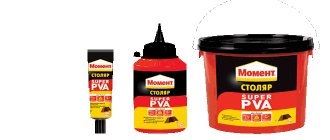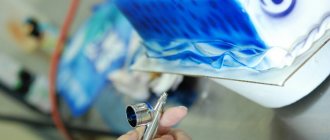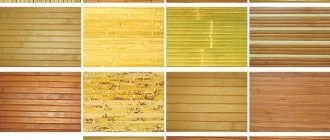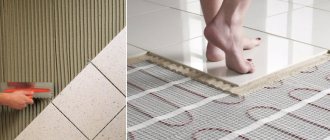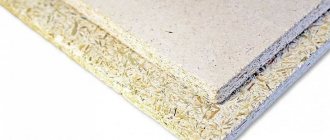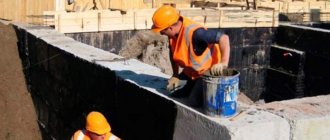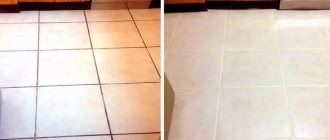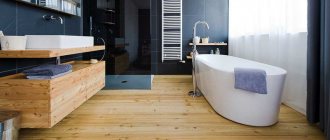12.04.2018 0
15926
Leveling tiles during installation is not an easy task, especially if it is done by a non-professional. To place tiles evenly and neatly on the floor or wall, you can use a special system. To do this, you should find out its characteristics, advantages and disadvantages, and also study reviews.
Advantages
The tile leveling system consists of a clamp stand and a wedge (or petal). The first part, after laying tiles or porcelain tiles, partially remains under the cladding, and the second is reusable. To use this device for its intended purpose, you do not need any special skills. But the tiled surface ends up being perfectly flat.
Among the advantages of using SVP are:
- absence of displacements and distortions between individual tiles;
- ease of obtaining a flat surface;
- accelerating the process of leveling ceramic or stone cladding;
- reducing the risk of tile subsidence from one of the corners when the tile adhesive dries.
Among the disadvantages of the automatic tile leveling system, mention should be made of the cost of money for the purchase of consumable devices and time for their installation. At the same time, it is recommended to work using a similar technology for fitting tiles only at temperatures from +10 0C and above.
The use of SVP will significantly speed up the cladding process
And we must remember that part of the plastic clamp used during installation remains in the seam, making it difficult to clean before grouting. Otherwise, the SVP is an extremely easy-to-use tool. It makes laying tiles a breeze.
An interior or entrance door to a private house, and even a window sill, are much more difficult to install.
Operating principle of clamps
Advantages
- High quality plastic, well made. The system is positioned as a separate installation technology;
- A well-thought-out design of the support platform, flexible petals allow you to securely fix tiles with a thickness of 3 to 20 mm;
- According to the instructions, nylon ties should be soaked in water for 30 minutes before use. This increases their tensile strength. After drying, they are easily removed with pliers;
- Convenient design for loosening the tie; it almost always breaks in the right place;
- The thickness of the tie is 0.8 mm, this allows you to make thin seams and adjust them with crosses.
Comparison of domestic and foreign systems
In stores, tile leveling systems can be found both manufactured in Russia and imported. There is no particular difference between these devices for laying tiles. They all work according to the general principle - a small stand is placed under the cladding from below with a gripper leading out into the seam, to which a clamp is screwed or attached on top.
As a result of this fastening, adjacent tiles on top and bottom are pulled together at the same level, forming a flat, single surface without distortions. Systems from different manufacturers differ only in the design of the upper clamp. It is either driven in with a wedge using a hammer, or tightened using a thread by hand or with a key.
Imported devices for leveling tiles are much more expensive and often require special nippers. Domestic analogues are cheaper and simpler in design. At the same time, in terms of the quality of plastic, the former usually outperform the latter. However, for independent use, most often the SVP is taken for one-time work. And it’s hardly worth paying extra here; the version made in Russia will be more than enough for one time.
Imported and domestic hovercraft
DIY tile leveling system
In terms of attractiveness, this option is inferior to the ready-made one. The installation system is created using aluminum wire, hardboard (fibreboard), and mounting tape. The wire should bend well, so it is better to use a material close in diameter to 1.7 mm. Instructions:
- using wire, a 9x15 mm rectangle is made, on one side the material is slightly bitten with a special tool (nippers), on the other, the ends are twisted;
- a small piece of metal mounting tape/profile is inserted into the finished product; this part will be located in a layer of tile adhesive;
- On top, the facing material is fixed with a piece of fiberboard; its width must correspond to a wire rectangle; a plastic wedge is also used, which will ensure rigidity of fixation of the finishing material.
When installing tiles on a wall, first level them with tile adhesive.
Peculiarities
Homemade devices are used on a similar principle as ready-made analogues. This option has a significant drawback - the leveling of surfaces is of poor quality. This is due to the fact that home-made designs contain errors, in particular, the wire in some places may not fit tightly enough to the tile.
The fiberboard top pad has a low level of elasticity, so self-leveling may not occur in this case. In homemade separators, a ready-made wedge is used, which makes it possible to increase the rigidity of the cladding fixation. However, this is not a necessary condition. You can make a similar element from scrap materials.
We use ready-made ones ourselves
Instructions for using SVP
The technology for working with the leveling system in question is as follows:
- The first tile is placed on the glue and carefully leveled.
- Along its edges, at a distance of 5–7 cm from the corner, lower stands are placed with the plant under the bottom of the tile and a couple of pieces on one side.
- The next tile is placed nearby.
- A wedge is inserted into the protruding clamp or a threaded tab is tightened onto it.
- The operation is repeated sequentially with the remaining cladding elements.
After gluing all the tiles on the floor or wall, you should get a surface where there are four leveling devices in the corners of the tiles at the intersection of the seams. The cladding remains in this form for at least a day until the glue has completely dried. Then the clamps are removed. In this case, the disposable plastic clips peeking out from above are torn off from their base, which remains in the seam.
How does SVP work?
Tool for laying tiles in the OBI online store
The OBI hypermarket catalog includes over 220 items of tools and consumables for laying ceramic tiles. Products are sold individually and in convenient sets at prices ranging from 15 to 2000 rubles per item.
This subcategory includes many different types of goods:
- Crosses and crayons.
- Spatulas and trowels.
- Chisels and wedges.
- Drill sponges and attachments.
- Plumb lines and cords.
- Cleaners and wedges.
Crosses for laying tile products are made of transparent polypropylene. Consumables of standard thickness and shape are available for sale.
Spatulas differ in several parameters:
- Dimensions (width).
- Material of manufacture.
- The shape of the working surface.
Rubber products are used for thorough grouting of joints. Devices with a serrated base are indispensable when applying glue to the lower surface of the facing material.
Plumb lines and rules are used to level the cladding during installation operations. Drill attachments are designed to thoroughly stir the adhesive mixture before use.
Order goods for exterior and interior finishing work in the OBI store using a mobile phone application.
Consumption, cost
The top element of the tile leveling system can be reused. But the lower part is a consumable item. The number of such disposable clamps required for a particular surface depends on the size of the tile used. The smaller it is, the greater the consumption of inserts will be. Moreover, in some cases, these clips will have to be installed not two per side, but three.
Wedges (petals) and clamp-inserts are sold separately, usually in packs of 100 pieces. The former for such a hundred-piece set will cost approximately 250–300 rubles, and the latter 150–200 rubles. As a result, the total costs, for example, for a 20 m2 floor will be in the range of thousands. Whether it is worth saving on such leveling devices is something each master will have to decide for himself.
How to use SVP
Pros and cons of SVP
Before using the SVP, you should familiarize yourself with all its pros and cons in order to be aware of everything during operation. Among the positive points it should be noted:
- Formation of identical tile joints;
- Tight fixation of tiles during work;
- Preventing shrinkage of tiles after the glue dries;
- Elimination of minimal irregularities;
- Uniform distribution of glue. This plus is especially important when you lay the tiles on an uneven surface, and the glue is distributed somehow.;
- Time-saving. Even beginners, thanks to a simple technique for laying tiles, can master the hovercraft without any problems.
There are cases when the tile joint must be larger than the SVP can provide. Then professionals recommend using plastic crosses.
But the system also has negative sides:
- You will have to suffer with removing the clamps and wedges. Monotonous work;
- You cannot do without additional financial costs for purchasing the system. If you plan to lay tiles in several rooms, you will have to buy additional clamps;
- Before removing the wedges, it is quite difficult to clean the glue from the joints;
- The slightest carelessness can ruin the entire integrity.
Homemade options
If you don’t want to spend money on factory products, then you can make leveling devices yourself. The upper clamps are made from ordinary pieces of wood or broken pieces of fiberboard. And the clamp inserted into the seam is made of thin aluminum wire and metal plates for emphasis. Only the legs of such a clip will need to be bitten in advance with pliers, so that later it can be easily broken and removed from the joint between the tiles.
Instructions for use of SVP
Flaws
- The clamps are not attached securely; if glue gets in, they stop holding;
- Weak clamping force. If you try to make it larger, the ties are easy to break;
- It is difficult to continue working after a night break. If you insert the ties right away, they dry out overnight and break off easily. It is also difficult to insert them into the dried glue, since the area is large. It will take a long time to peel with a spatula or screwdriver;
- Reusable caps are only enough for 5-7 times;
- High price.
Useful tips
- With the help of SVP it will not be possible to eliminate every surface unevenness. Alignment is carried out on the tile located at a higher level. Empty spaces are formed under the raised tiles. This risks causing the tiles to split and crack in the future. It is necessary to carry out the cladding, first ensuring a completely level base. It is permissible to use SVP on those surfaces where the maximum level of difference does not exceed 1 cm.
- Also, using SVP it is impossible to completely avoid cracks in the tiles. Its installation must be carried out using tile adhesive with a composition that is optimal for a particular coating. If the adhesive is not suitable for the tiles, then dynamic loads risk deforming the entire structure.
- The suitable temperature for using SVP is +10°C. You also need to take into account drafts and air humidity levels. This will ensure high quality work.
- When purchasing an alignment design, you should make sure of the quality of the mechanisms supplied in the kit. Today there are many fakes of such systems on the market.
- The quality of the tile materials should be maximum - this will ensure an even coating of the cladding.
- You should not try to save on the number of installed clamps, otherwise there is a risk of weak fixation of the structure, which will deform the coating.
Before using the SVP, you need to test your skills and abilities. To do this, it is enough to connect 9 tiles into a square on the floor using a hovercraft, without using an adhesive. This reduces the risk of damaging the tiles and SVP tools during installation.
Where to buy SVP?
You can order original Karofit SVPs from the manufacturer on the website svptool.ru
SVP Karofit (Karofit TLS) is a complete analogue of RLS Raimondi and DLS, both in shape/size and quality. Production is located in Turkey.
- Karofit has a clip (clip/base) that is only 1mm thick!
- the shape of the wedges has also recently been refined and updated - now they have a sharper shape, and thanks to the directional teeth the wedges are clamped even smoother and softer
- the wedge is made of durable alloy - it is truly reusable (unlike some cheaper SVPs)
- at the moment SVP Karofit has the best price among its analogues
- the Karofit system is represented in many European countries - Germany, Spain, France, Belgium, the Netherlands, Austria, Serbia, Czech Republic, Poland, Bulgaria, Turkey, and now Russia
- Among the company's own developments are pliers (clamping tools), the quality of which has already been appreciated by hovercraft manufacturers in many countries and they have begun to equip their systems with them. Mustang LS (Spain), Pony LS (Spain), DLS (Russia), Lantelme (Germany), Tegelleveling (Netherlands) and many others use Karofit tongs in their svp
@instabur.pro recommends!
Buy SVP Karofit
What is a SVP system?
The Tile Leveling System (TLS) is an innovative device for laying tiles on floors and walls, which was invented in the West, where it has been used for a long time. This tool is used for laying porcelain stoneware and ceramic tiles with a thickness of 0.3 to 20 cm.
There are two types of devices for evenly laying tiles:
- Economy model. It is used on a relatively flat surface without significant differences. The device includes wedges and a base that they clamp, thanks to which the tile is securely fixed, the joints are leveled, and minor irregularities are leveled. In this case, the wedges can be reused, but part of the clamp remains in the seams, so you need to buy them each time. As a rule, these are Russian-made products.
- A more expensive and reliable version of a tool for tile work with expanded functionality. Thanks to the curved shape, the best result is achieved. The clamps are made in the form of a wedge or a flexible petal. The device first displaces the tiles and then levels them, adjusting them to the required parameters in order to evenly distribute the glue and create a flat surface. These are foreign devices for leveling and laying reusable tiles, but dismantling them requires a special tool.
However, do not assume that the SVP tile tool will completely level the surface and distribute the mastic evenly. This product is only an addition that allows you to correct minor defects during tile laying. At the same time, in order to achieve the expected effect, the tiles must be of high quality and perfectly flat.
How to do it yourself
Homemade hovercraft are less accurate, but this is a great way to save money. Aluminum wire and metal rectangles are used as a homemade leveling system. A clamp is made from wire, and a stop is made from a metal plate. Using wire cutters, make the required number of rectangular clips. Cut rectangular stops from strong metal, and also prepare plastic wedges.
The algorithm is as follows:
- We install a metal plate perpendicularly into the clamp wire, which will rest against the tile.
- We lay the tiles on top of the metal plate.
- Then we install the plastic wedge into the aluminum clamp. If necessary, we additionally insert fiberboard scraps to secure the structure well.
That's all. The homemade hovercraft system is ready.
Features of use
If the installation of the facing coating is carried out unprofessionally, it will ruin the interior and lead to a host of other unpleasant consequences - for example:
- Fungal formations and dirt will begin to appear in the seams between the tiles.
- There is a possibility of accidental injury.
- Under the influence of mechanical loads, the material will begin to collapse.
Most often, this leveling system is used if the tiles are larger than 40 cm. Sometimes it is used for small facing materials.
The following types of leveling structures are distinguished: with a wedge-shaped or screw tensioner, with a special tool for fixation - a jagged strip.
Designs with a wedge-shaped tensioner include two plastic elements - a wedge with a tooth and a key-clamp with a base in the shape of a polygon or oval. The clamp is a plastic element in the shape of the letter “T”. Its top part can be quickly broken off. This element can be used once, and the wedge can be used repeatedly. The design may contain tapes, meters, clips, caps and other auxiliary elements. It is necessary to purchase a rubber hammer to use it to beat off the locking mechanism.
To tighten the structure with a screw tensioner, a steel pin and a screwdriver are used.
Leveling systems with a locking tool are used for installing tiles whose thickness ranges from 3 to 30 mm. You also need to additionally purchase a special tool.
Wedge Clamping Tool
For more comfortable and faster work with large RLS, DLS and Karofit systems, special pliers (pincers) were manufactured. Not only do they allow you to quickly and powerfully clamp the wedges into the clips (and protect your hands and fingers), but they also do this with a constant, equal force, thanks to their precise adjustment.
That is, once you adjust these pliers to a certain thickness of the tile, you will no longer experience under-pressure or over-squeezing with the clip breaking.
Recently, manufacturers of more compact SVPs have also begun to think about making tongs for their systems. For example, SVP-Nova already has such a tool.
How to use the leveling device?
Working with the SVP system is quite easy; the surface is leveled very quickly. Of course, you need to understand the principle of operation and get a little hands-on.
The technique for laying and leveling tiles is as follows:
- An adhesive composition is applied to the prepared, cleaned base using a trowel, which is distributed over the surface with a special notched spatula.
- Then you need to install the first tile and, using a building level, level it, as it will serve as a basis for other elements.
- In the future, everything depends on the type of clamps used. The tile leveling system can be installed in two versions:
- installation of SVP along the edges of the tile (at a distance of 5 cm from the edge), that is, two clamps on each side;
- installation of the SVP at the crossroads of adjacent tiles, that is, one clamp in each corner.
- Whichever option you choose, the next steps are:
- you need to press out the thrust pad from the device;
- it must be placed under the bottom of the tile so that the tail of the clamp with a window sticks out from the seam;
- You need to insert a wedge into this connector.
- The wedge is mounted until it is completely fixed using adjustable pliers.
- You should carefully ensure that the adhesive base does not get on the clamp, since the fixation area must be absolutely clean.
- If the glue comes out in some place, it must be removed immediately.
- All tiles are laid and leveled in the same way. The SVP system must be left until the mastic has completely dried.
- After the glue has dried, the device can be removed. The wedges are pulled out of the connector, and the clamp breaks off and remains in the seam.
Of course, during the work you need to constantly check the evenness of the installation using a building level.
